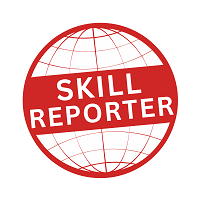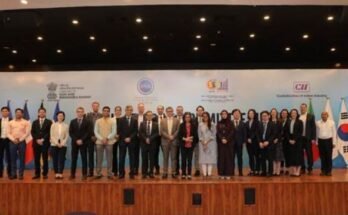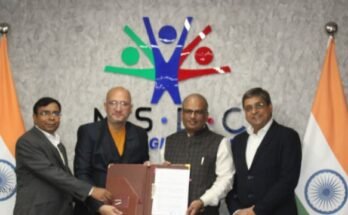In a series of proposals that might lead to improvement in the higher education infrastructure and skill development of individuals in urban regions, the Niti Aayog in its Three Year Action Agenda 2017-18 to 2019-20, released on Thursday, said that the government needs to create 20 world-class universities, provide autonomy for top colleges and universities, reform the regulatory system, establish system of project-/researcher-specific grants and increase focus on vocational and profession-led education.
Stating that the skill development initiatives by the government have not yielded the desired result and the country still faces a challenge of training a large workforce, it recommended that for those who undergo skill training, the National Skill Development Corporation (NSDC) should target a placement rate of 80 percent or more by 2020.
In its agenda report, it said that there is a need for greater focus on improving quality higher education. “An assessment of 1,50,000 engineering graduates in 2016 found that only 18 per cent of engineers were employable in the software services sector in a functional role, only 41 per cent in non-functional business process outsourcing and only 4 percent in software engineering start-ups. The government’s strategy on improving higher education should focus on autonomous governance and transparency, and outcomes are critical components of a vibrant and successful higher education sector,” the agenda said.
The Aayog has suggested a series of measures to improve learning outcomes and improve skills for jobs. It has recommended changes in the Right of Children to Free and Compulsory Education (RTE) Act to focus on learning. Improving quality of higher education and NSDC working on achieving an 80 percent placement target are among the other suggestions given by the think-tank, to improve education and skills of people.
Among the regulatory reform, the Aayog has pitched for overhaul of the University Grants Commission (UGC). “The UGC Act, 1956, is in dire need of reform. The UGC’s position as an overarching regulator of every aspect of higher education from student fees to curriculum to teaching and course hours keeps India’s higher education system from responding to the changes and challenges that it faces in a fast-evolving world.
Various professional councils further complicate the regulatory environment in higher education. We should introduce a system of regulation that focuses on information disclosure and governance rather than micro management of universities. This requires an overhaul of the UGC as a regulatory system and a rationalization of the role of professional councils,” the agenda said.
Skill development
The Aayog noted that despite a numerous skill development initiatives by the government that have been undertaken till date, the country still faces a challenge of training a large workforce. Estimates suggest that only 2.3 percent of India’s workforce has undergone formal skill training, compared to United Kingdom’s 68 percent, Germany’s 75 percent, USA’s 52 percent, Japan’s 80 percent and South Korea’s 96 percent, the report said. According to estimates for the period 2013-14, India’s annual skilling capacity at around seven million is significantly lower than the workforce entering the market annually, while the quality of skills imparted is also a matter of concern, it said.
According to the Skill Development Sector Achievements report, December 2016, the NSDC partners skilled 24.9 lakh people, of which 12 lakh were placed in 2014-15. This translates to a placement rate of below 50 percent. “It is recommended that a target of a placement rate for 80 percent or more should be set for 2020.
Furthermore, all NSDC partners should be required to report on the additional metrics…including the percent of certified candidates employed, longevity of certified candidate in their chosen job field, wage difference between certified and unskilled candidates, number of entrepreneurs created through the vocational training ecosystem and number of certified candidates employed in overseas vocational jobs,” it said.
The Agenda also recommended a national-level Overseas Employment Promotion Agency that should be set up under the Ministry of External Affairs to consolidate all the promotional initiatives of the government.
Improving outcomes
The agenda said that the challenge in front of the Indian school education system is to improve learning outcomes. Through initiatives like the Sarva Shiksha Abhiyan and the RTE Act, the Indian school system has focused on measuring and delivering inputs. The gross enrolment ratio (GER) in 2015-16 for grades I-V was 99.2 percent and for grades VI-VIII was 92.8 percent. Pupil-teacher ratio at national level for elementary schools was 24:1 and for secondary schools it was 27:1.
“Unfortunately, this success in getting more children into schools with more teachers has not translated into more education. The proportion of children in grade-III who can read at least a grade-I level text dropped from 50.6 in 2008 to 40.3 in 2014, before increasing marginally to 42.5 in 2016, according to Pratham’s Annual Status of Education Report (ASER) data. The proportion of children in grade-III who can do at least subtraction fell from 39 percent in 2008 to 25.4 percent in 2014, and again increased slightly to 27.7 percent in 2016. Poor learning outcomes are reflected in multiple other sources as well, including the National Achievement Survey (NAS), which found worse results in Class V Cycle 4 (2015) compared to Cycle 3(2012),” the Aayog said in its report.
These are not the only results, which suggest that a focus on inputs does not help improve education. Data show that the traditional levers — more or better infrastructure, lower pupil-teacher ratios, higher teacher salaries and more teacher training — by themselves have not been effective in improving student learning outcomes. “The most critical missing pieces that evidence has shown to be effective are pedagogy that focuses on teaching at the right level, outcome-linked incentives and governance that enables the system to operate smoothly,” the report said, while pitching for these changes to improve outcomes.
It said that between 2010 and 2014, public schools increased by approximately 13,500 in number but total enrollment in them fell by 1.13 crore, while private school enrollment rose by 1.85 crore. “This shift has been accompanied by hollowing of an alarmingly large number of public schools…public schools with fewer than 50 students (and an average of 29 students per school) stood at 3.7 Lakh schools in 2014-15. They represented 36 percent of all public schools. High rate of teacher absenteeism, limited time spent on teaching when the teacher is in class and generally poor quality of education are among important reasons for this emptying out. Outcomes are worse in government schools than in private schools, and those who can leave are voting with their feet,” the agenda report said.
Quality improvement through improved governance is one way of slowing or reversing this process. These measures include a focus on school leadership, administrative tenure, basic monitoring by administrators to resolve school level issues such as teacher absenteeism, and transparency in teacher appointments and postings/transfers.
One way to improve learning outcome is to modify the RTE Act to actually make it a ‘right to learning’, instead of being, as it currently is, a ‘right to go to school’, the Aayog said. The recent amendment of Rule 23(2) under the RTE Act, which makes it compulsory for all state governments to codify expected levels of learning for students in classes I to VIII, is a positive step. It requires states to prepare “class-wise, subject-wise learning outcomes for all elementary classes” and devise “guidelines for putting into practice continuous and comprehensive evaluation, to achieve the defined learning outcomes”. In implementing this mandate, states should begin by devising their learning indicators and planning a state-level measurement system for every child, the report said.
Note: News shared for public awareness with reference from the information provided at online news portals.



